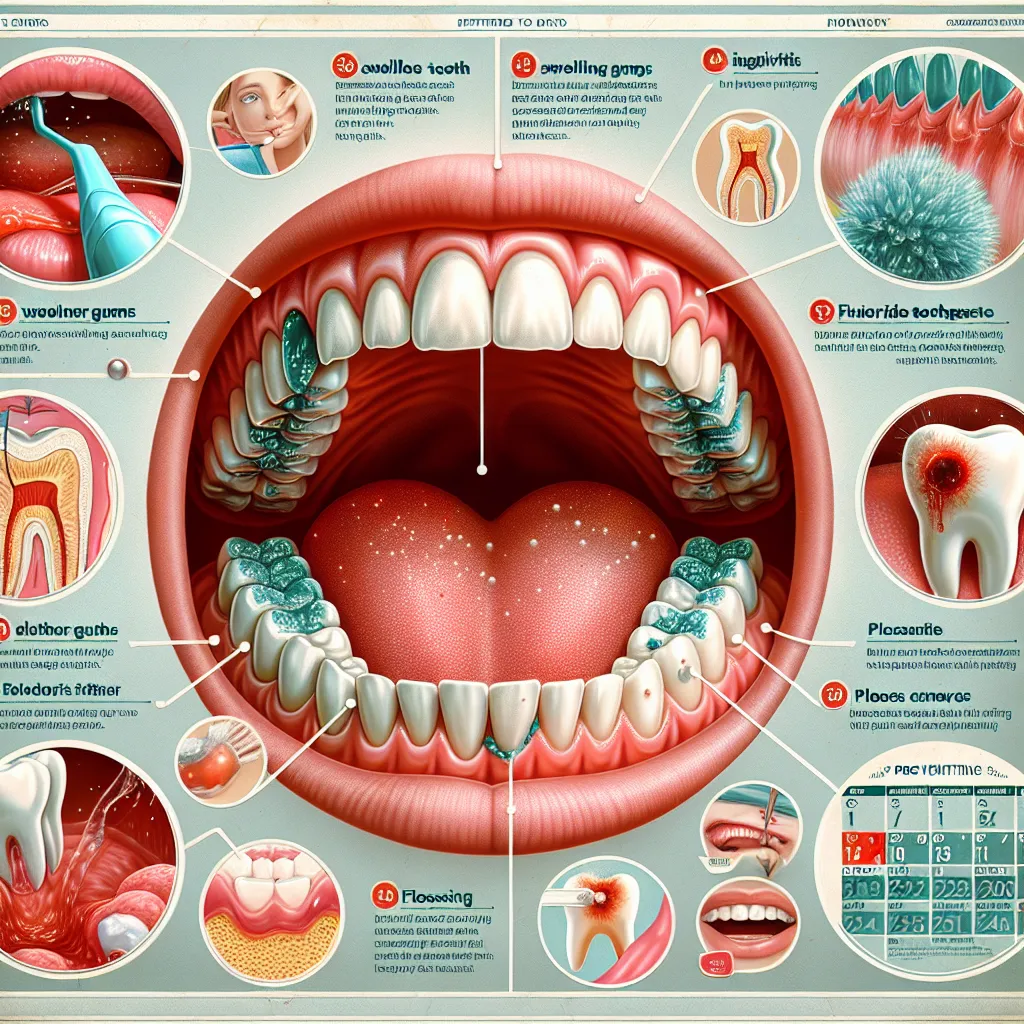
Understanding Early Signs of Gingivitis and Preventative Measures
Gingivitis is a common inflammatory gum condition that, if left untreated, can progress to more severe forms of gum disease. Recognizing the early signs and implementing preventative measures are crucial in maintaining oral health. In this post, we will explore the clinical manifestations of gingivitis, the various risk factors contributing to its development, and effective strategies for preventing and treating this oral health issue.
Clinical Manifestations of Gingivitis
Gingivitis is a common and preventable form of gum disease that can lead to more serious oral health issues if left untreated. Recognizing the early signs and symptoms of gingivitis is crucial in preventing complications and maintaining good oral hygiene.
1. Redness and Swelling
One of the early signs of gingivitis is redness and swelling of the gums. This inflammation is often the result of plaque build-up along the gumline, leading to irritation and sensitivity.
2. Bleeding Gums
Another common symptom of gingivitis is bleeding gums, especially during brushing or flossing. This occurs due to the weakened gum tissues and blood vessels resulting from the bacterial infection.
3. Bad Breath
Gingivitis can cause persistent bad breath or a bad taste in the mouth. The bacteria in the mouth produce toxins that irritate the gums and contribute to foul odors.
4. Receding Gums
As gingivitis progresses, the gums may start to recede or pull away from the teeth, creating pockets where bacteria can accumulate and further damage the oral tissues.
5. Tooth Sensitivity
Increased tooth sensitivity to hot, cold, sweet, or acidic foods and beverages can also be a sign of gingivitis. The exposed tooth roots due to gum recession can lead to discomfort.
6. Changes in Gum Texture
Gums affected by gingivitis may feel tender or appear shiny. Changes in gum texture, such as smooth or puffy gums, can indicate an inflammatory response to the presence of bacteria.
Risk Factors for Developing Gingivitis
Gingivitis, a common gum disease, can be influenced by various risk factors that individuals should be aware of to prevent its development and progression.
1. Poor Oral Hygiene
Neglecting proper oral hygiene practices, such as regular brushing and flossing, can significantly increase the risk of gingivitis. Plaque buildup leads to inflammation of the gums, initiating the disease process.
2. Smoking
Cigarette smokers are more likely to develop gingivitis due to the harmful chemicals in tobacco that weaken the immune system and hinder the body’s ability to fight off gum infections.
3. Hormonal Changes
Fluctuations in hormone levels, especially during puberty, pregnancy, and menopause, can make gums more sensitive and prone to gingivitis. Proper oral care during these stages is crucial.
4. Diabetes
Individuals with diabetes have a higher risk of gingivitis due to poorly controlled blood sugar levels, which can contribute to bacterial growth in the mouth and gum inflammation.
5. Medications
Some medications, such as antihistamines and certain blood pressure drugs, can cause dry mouth as a side effect. Reduced saliva flow increases the risk of gum disease by allowing bacteria to thrive.
Strategies for Preventing Gingivitis
Gingivitis, the early stage of gum disease, can be a pesky problem if left unchecked. Fortunately, there are several strategies you can adopt to prevent gingivitis and keep your gums healthy and happy. Let’s explore some effective ways to combat this common oral health issue.
1. Proper Oral Hygiene
One of the most fundamental ways to prevent gingivitis is by practicing good oral hygiene. Make sure to brush your teeth at least twice a day, floss daily, and use an antimicrobial mouthwash to eliminate bacteria that can lead to gum disease.
2. Regular Dental Check-ups
Scheduling regular visits to your dentist is crucial in preventing gingivitis. Your dentist can detect early signs of gum disease, provide professional cleanings, and offer personalized advice on how to improve your oral hygiene routine.
3. Healthy Diet Choices
What you eat can also impact your gum health. Opt for a balanced diet rich in fruits, vegetables, and whole grains. Avoid sugary and processed foods that can contribute to plaque buildup, increasing the risk of gingivitis.
4. Stress Management
Believe it or not, stress can affect your oral health and make you more susceptible to gum disease. Incorporate stress-reducing activities such as yoga, meditation, or exercise into your daily routine to keep your gums happy.
5. Quit Smoking
Smoking is not only harmful to your overall health but also significantly increases the risk of developing gingivitis and other gum diseases. Quitting smoking can greatly improve the health of your gums and overall oral health.
6. Stay Hydrated
Drinking an adequate amount of water throughout the day helps flush out bacteria and food particles that can lead to gum inflammation and disease. Opt for water over sugary beverages to promote gum health.